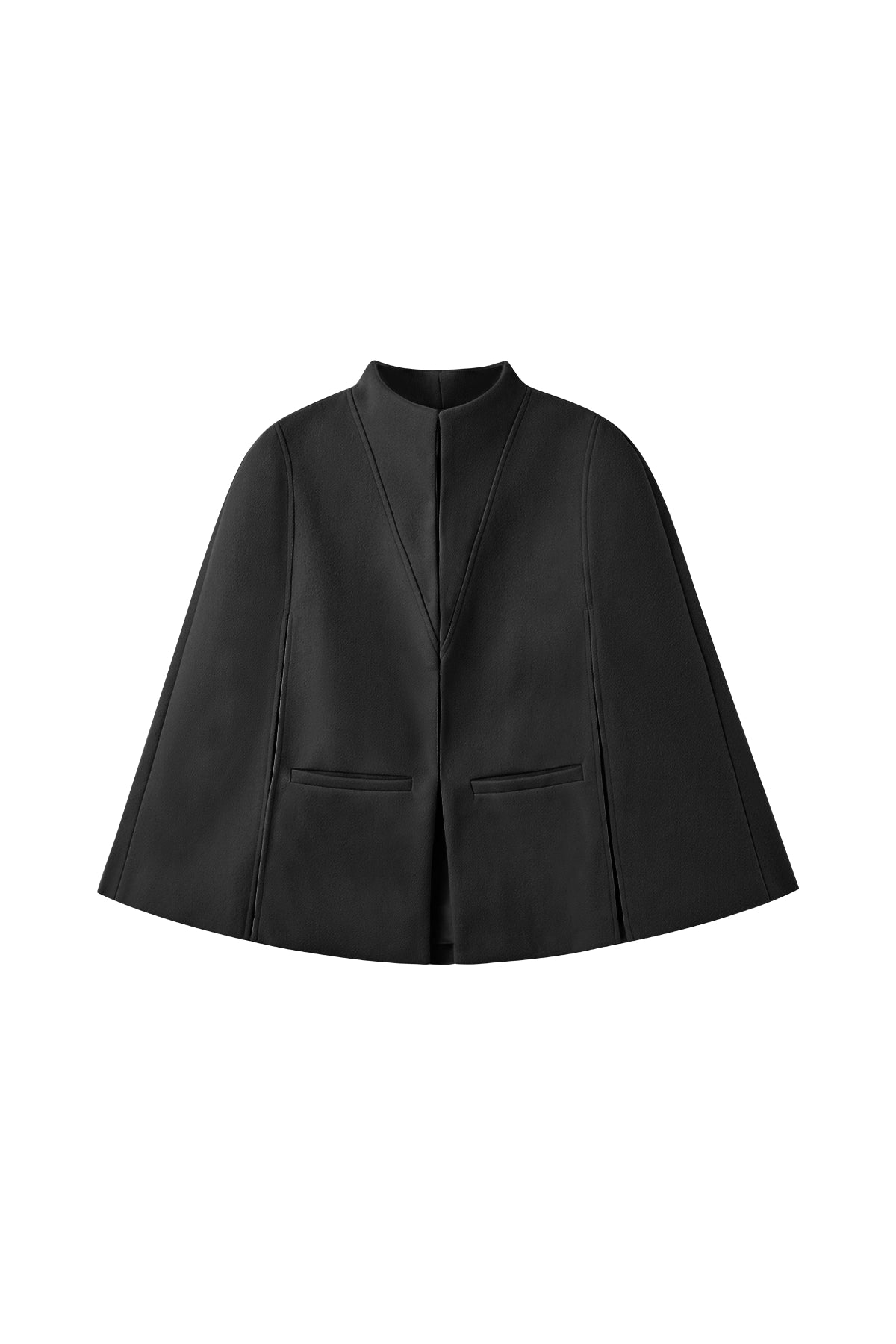Although a blazer is versatile, in formal occasions, questions such as whether you should button it, whether to unbutton it when sitting down, whether the shirt cuff should be visible, and even why women’s blazers often have no pockets, all these seemingly small details directly affect your professionalism and overall presence. No one wants to appear inappropriate at a job interview, business meeting, or social gathering because of improper styling. That’s why mastering blazer etiquette and details has become an essential lesson for women to enhance their image, confidence, and sense of style.
How to Button Women’s Blazer
Many women wonder: do women button their blazer? The answer is: it depends on the occasion and the style of the blazer.
One-button blazer: Usually recommended to button when standing, as it adds formality. The button stance is typically at the natural waist or slightly above, serving as the structural pivot of the design. Buttoning helps secure the lapel roll line and darts, shaping a smooth S-curve from chest to waist to hips. Leaving it unbuttoned may look sloppy.
Two-button blazer: Follow the classic rule “button the top, leave the bottom unbuttoned.” The lower front needs room to cover the hips and thighs; buttoning the bottom restricts movement, tightens the hem, and creates X-shaped wrinkles, disrupting the drape and stride. The top button aligns with a mid-to-high stance, stabilizing the waist without constraining the hem.
Three-button blazer: The visual focus is the middle button. Buttoning the top raises the closure point, shortening the V-zone of the chest, which suits formal or conservative settings or taller body types. The bottom button, however, restricts movement just like with two-button blazers.
This is not a rigid rule, but rather a small detail that enhances your professional image.
Do Women Unbutton Blazer When Sitting Down?
The answer is: Yes, it’s recommended to unbutton.
Do women unbutton blazer when sitting? This is a very common question. It’s advisable to unbutton when sitting down—not only for comfort, but also to prevent the fabric from being stretched or creased.
In formal settings, button it again when you stand up. This shows elegance and good manners.
Is It OK to Not Button a Blazer for Women?
In some cases, it is completely fine:
Casual everyday wear: Leave it open and pair with a T-shirt or blouse to create a relaxed vibe.
Street style fashion: Not buttoning makes it look even more effortless and chic.
Business meetings: It’s usually advised to keep it buttoned while standing, as a sign of respect.
How To Cuff Blazer Sleeves Women
How to Roll Up Blazer Sleeves
Rolling up blazer sleeves is a small trick to add style. Common methods include:
Casual roll: Flip the cuff outward two or three times. It doesn’t need to be neat. This creates a natural, relaxed look, perfect for casual outings or weekends, making the blazer appear more effortless and stylish.
Shirt cuff roll: Use the cuff of your shirt or knitwear underneath to hold the blazer sleeve in place. This not only keeps the roll secure but also adds a layered effect, making it great for work or when you want a cleaner look.
Neat fold: Fold the sleeve upward once or twice, keeping it symmetrical. This creates a tidy and sharp look, most suitable for business casual occasions, making you look professional and polished.
How to cuff blazer sleeves women—this can make your overall outfit feel lighter and also flatter the arms.
The Professional Touch of the Cuff
In business settings, letting your shirt cuff extend 1–2 cm (about half an inch) beyond the blazer sleeve looks more formal. This small detail makes you appear more professional and shows refined dressing sense.
Why No Pockets in Women’s Blazer?
This mainly comes down to a trade-off between history and aesthetics. In the past, design emphasized body lines over functionality, so pockets were sacrificed. Today, the trend is shifting toward balancing beauty and practicality, and in the future, women’s blazers with real pockets will become increasingly common.
Historical reasons: For a long time, women’s clothing design focused on highlighting body curves rather than utility. Pockets were considered disruptive to smooth lines, so designers often made decorative pockets or stitched them shut to keep the blazer fitted.
Aesthetic considerations: Even today, many brands emphasize the blazer’s sharp and clean silhouette. Real pockets tend to bulge when used, distorting the shape. That’s why many women’s blazers keep the pocket flaps but without functional depth.
Modern trends: Nowadays, consumers value practicality more. Some mid-to-high-end brands have begun reintroducing functional pockets—for, for example, discreet inside pockets or thin, flat pocket linings that can hold a phone or cards without ruining the shape.
Final Tips
Women’s blazers are not only a “wardrobe essential” but also a fashion piece that reflects attention to etiquette and detail.
When standing, button appropriately; when sitting, unbutton for comfort.
For two-button blazers, always button the top, leave the bottom unbuttoned.
Rolling up sleeves works for casual looks, while showing shirt cuffs is more professional.
Pocket design is mostly an aesthetic choice—don’t force practicality where it’s not intended.
By mastering these small dressing details, you can project confidence and authority in any setting, making the blazer your best asset in both career and life.




